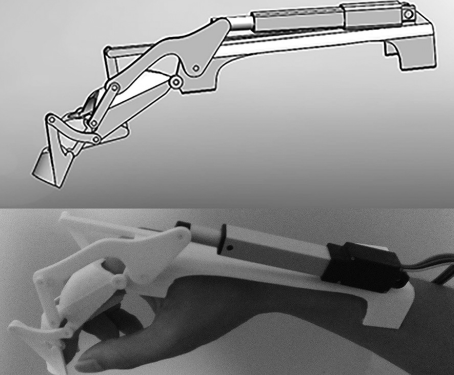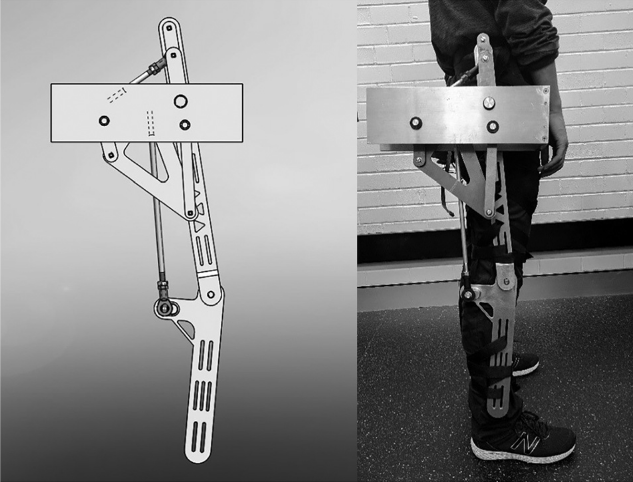Finger exoskeleton
An wearable robot to support the rehabilitation of fingers.
Exoskeletons can assist wearers to relearn natural movements when attached to the human body. Most current devices are bulky and heavy, which limit their application. This project aimed to develop light-weight and simple mechanical linkages to mimic the human’s finger motions for a wearable robot, i.e. finger exoskeleton, to support rehabilitation in the fingers after surgery.
The project used the integrated type and dimensional synthesis proposed in (Shen et al., 2018) to develope one degree-of-freedom linkages with only one revolute joint while generating multiple outputs at three finger joints.

Left, 3D design of the leg exoskeleton. Right, the manufactured leg exoskeleton.
